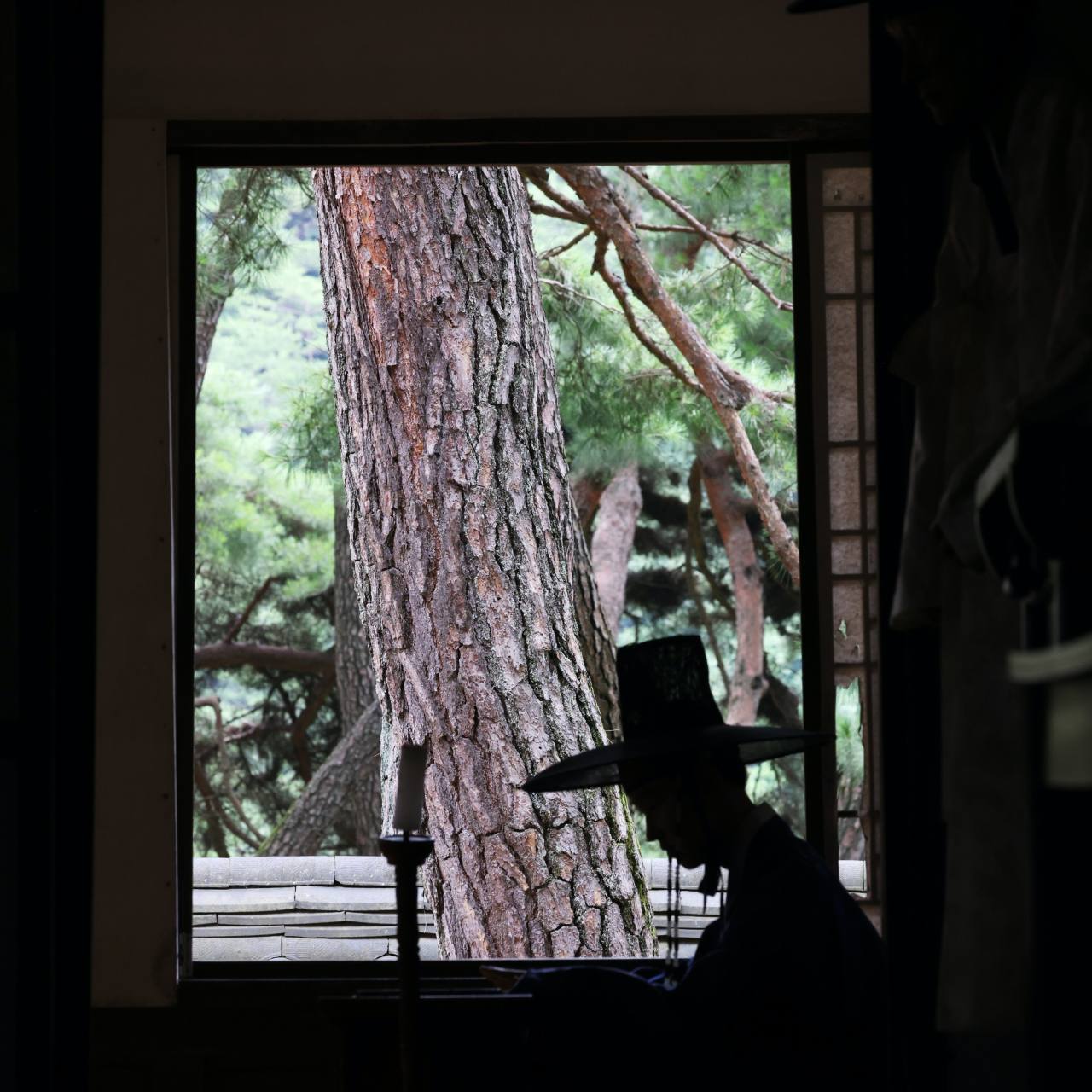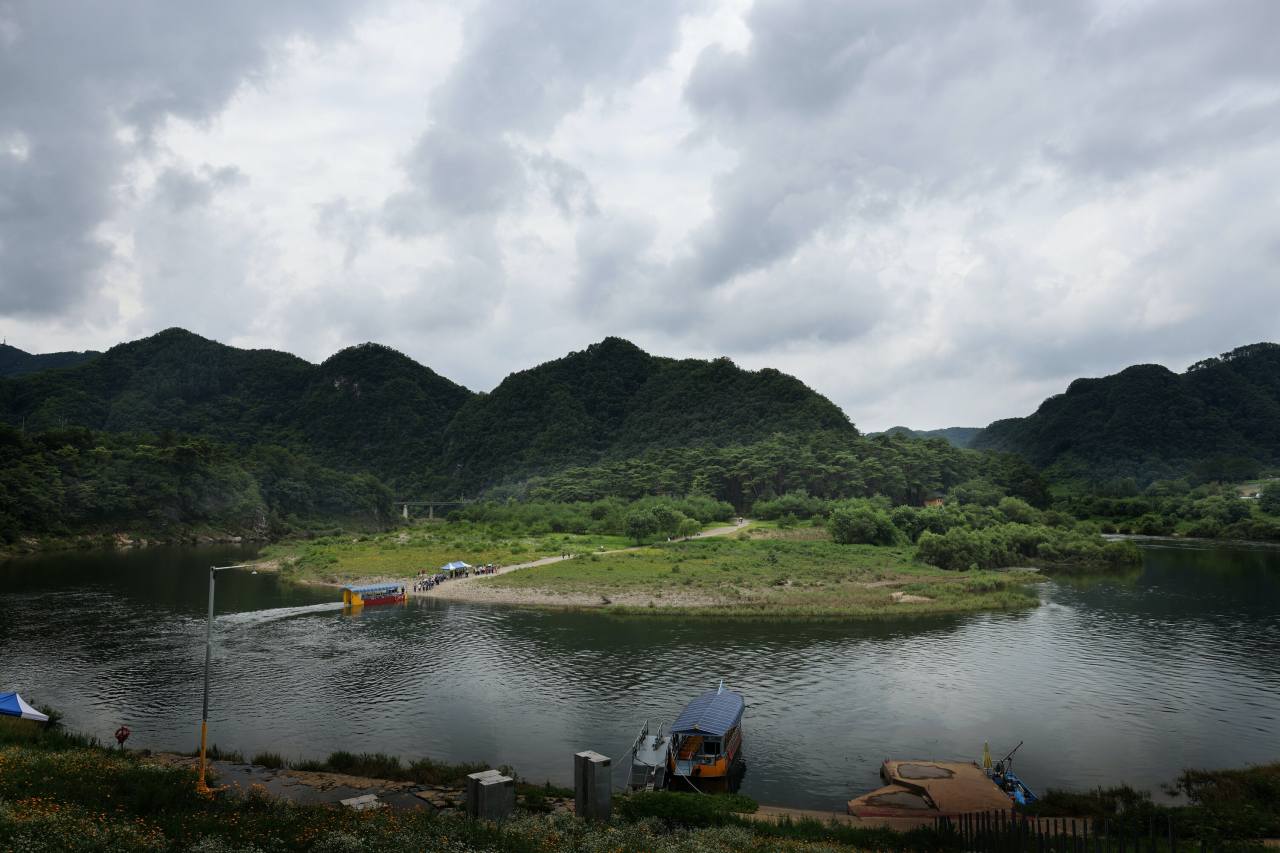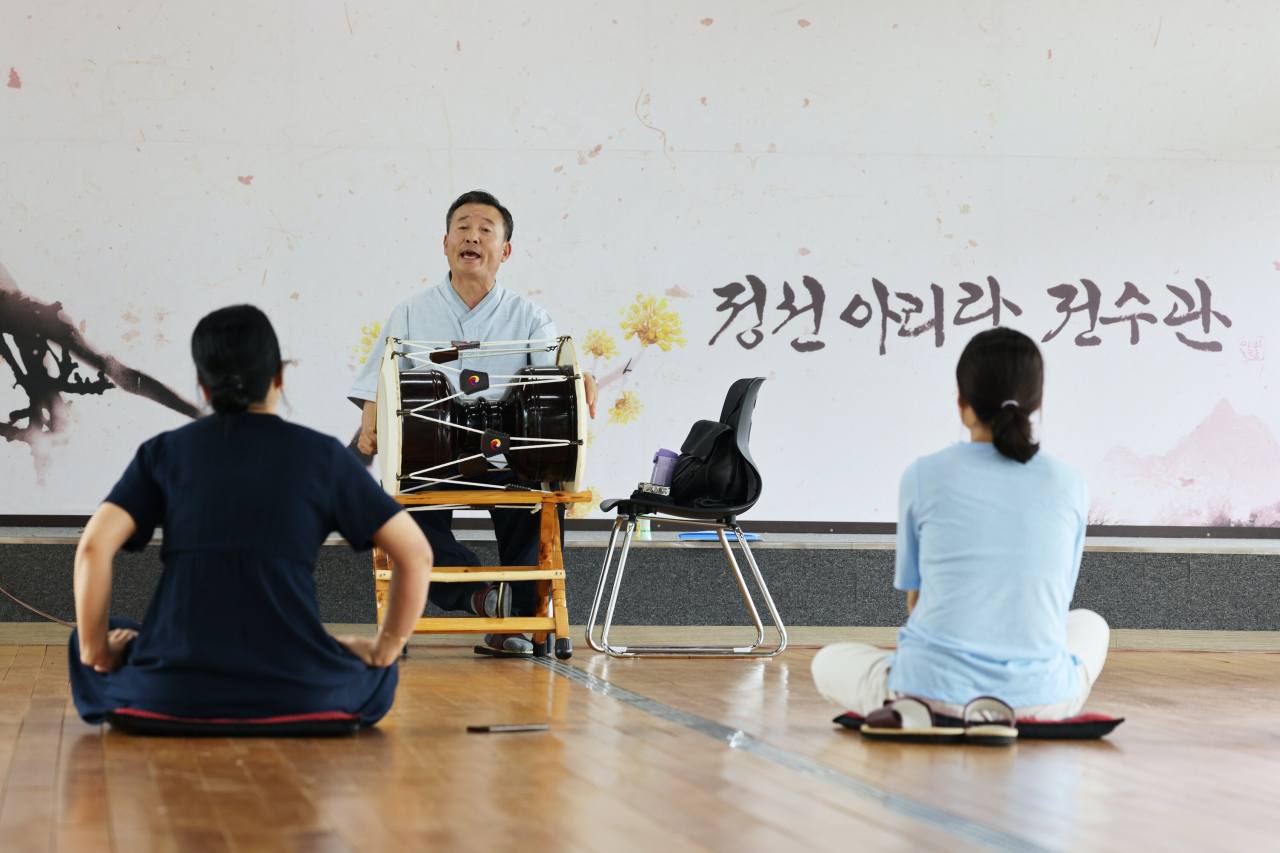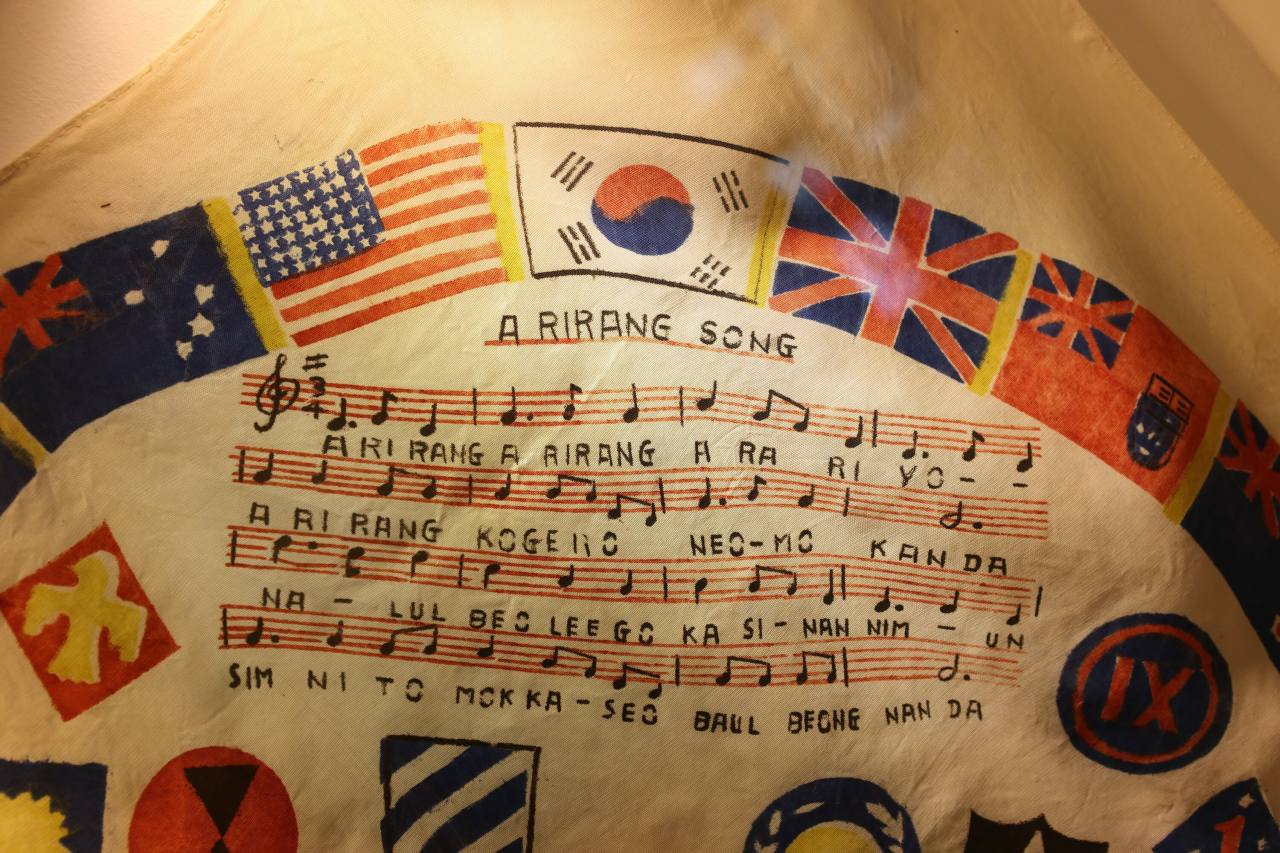 |
A life size male mannequin depicting Joseon King Danjong (1441-1457) is seen against a courtyard in his house of exile Cheongnyeompo in Yeongwol, Gangwon Province. Photo © Hyungwon Kang |
Arirang songs evoke powerful emotions and often lead to spontaneous shoulder dance moves among Koreans, at home or abroad.
Arirang is a genre of Korean music featuring heart-wrenching laments of tragedy, hardship, suffering and injustice. Arirang‘s improvisational nature enables anyone to easily weave their own poignant life stories into the song, like modern-day rap.
Life has always been tough for ordinary Koreans, especially in remote areas. Poverty, hard labor, and abrupt political change combined to produce what Koreans call “aehwan,” which means sadness and joy. In Korean folk music DNA, Arirang is known to express those laments in songs.
The Arirang mountain pass was an omnipresent influence on this folk music tradition, giving it its name. Korea is a land dominated by imposing mountain ranges, some impassable, isolating the villages and cities in provinces from each other. “Arirang gogae” means the Arirang mountain pass. All Arirang songs feature the Arirang gogae.
The act of climbing through a difficult mountain pass is symbolic of painful life transitions. For example, consider the 1392 story of feared militia leader Yi Seong-gye of Hamheung. He led his private army on a long journey to Gaegyeong, the ancient capital of the Goryeo, and overthrew the rulers there in a bloody mutiny.
Goryeo officials who survived were forced to walk out of one of the 26 gates of the Gaegyeong city walls - which connected all roads to the waning empire - never to look back. Several loyal former Goryeo government officials traveled through mountain passes all the way back to Jeongseon County in Gangwon Province. There, they sang Arirang, lamenting the fate of those who refused to serve two kings.
 |
Cheongnyeompo, where King Danjong (1441-1457) of Joseon era was sent to exile, is surrounded by Donggang on three sides and a cliff on one side. Photo © Hyungwon Kang |
Researchers have identified thousands of variations of Arirang songs. One of the more well-known Arirang variations hails from Gangwon Province. It memorializes King Danjong (1441-1457) of the Joseon era, whose short reign and tragic life ended when his uncle exiled him to Yeongwol, Gangwon Province.
Jeongseon Arirang “needs to be sung from the guts; only then do the sounds of the sorrows of a quiet life come out from the bones and the land,” said Kim Nam-ki, 85, a Jeongseon Arirang master who performed Jeongseon Arirang at the opening ceremony of the PyeongChang 2018 Olympic Winter Games.
“Despite taking ginseng and deer antler tonic daily to avoid growing old, what is this wretched rough gray hair on my head! Ah, Ah!” sings Kim.
Jeongseon has many Arirang songs about the dangerous old ways of harvesting and transporting Korean pine lumber to market. This prized wood was used to build royal palaces and houses. It came from the Taebaek Mountains in Gangwon Province, where ancient groves grew plentifully in the high ridges.
The insatiable demand for lumber in Seoul enticed people with the rare opportunity of lucrative work.
At times of high water on Donggang, the men of rural Jeongseon would jump on timber rafts and transport pine logs from the Taebaek Mountains downstream to Seoul. One Arirang song relates the tragic death of a young man who never returned from a timber raft trip and his girlfriend who longed for his return. She jumped into the river to drown and join her boyfriend in the afterlife.
This song has been memorialized with the statues of a young man and a maiden, standing on opposite sides along the banks of Donggang, next to the Jeongseon Arirang Training Center. This location was the traditional starting point of the timber rafts departing for Seoul.
 |
Jeongseon Arirang teacher Lee Hyun-soo teaches Arirang at the Jeongseon Arirang Training Center in Gangwon Province. Photo © Hyungwon Kang |
The song gets performed in Jeongseon County’s Arirang Center roughly every five days. The performances coincide with the days that Jeongseon open market convenes.
Arirang music and songs can trigger powerful visceral and emotional reactions in people.
Foreign visitors to Korea in the 19th century, such as Homer Bezaleel Hulbert (1863-1949), noted that “Singing Arirang is like rice to Koreans. Koreans sing because they love to sing.”
Hulbert, who was an American missionary, journalist and political activist, advocated for the independence of Korea from Japanese colonial rule. Hulbert was a close personal friend and adviser to Emperor Gojong, and taught English to Syngman Rhee, the future first President of the Republic of Korea.
Arirang songs have spread far beyond the Korean homeland. Koreans abroad who suffered tragedy carried the tradition with them. Arirang music was even found among prisoners of war in Germany -- two Korean men who were captured fighting under the Soviet flag were Arirang-singing Koreans.
Koreans in the Soviet Union who suffered greatly during Joseph Stalin’s 1937 mass relocation still sing Arirang songs.
Hundreds of thousands of Soviet Koreans from the Russian Far East were forcibly moved to uninhabited Central Asia plains, modern-day Kazakhstan and Uzbekistan. Tens of thousands did not survive the unheated train ride covering some 6,400 km from home and the subsequent winter, where people had to dig holes in the ground to survive the elements.
 |
A 1951 scarf shows the Arirang sheet music with the flag of the United Nations Forces fighting in the Korean War. Some foreign musicians recorded the Arirang tune upon returning home from Korea. Photo © Hyungwon Kang |
Arirang also became a part of the Korean experience for United Nations soldiers fighting in the Korean War.
A vintage 1951 Arirang scarf made during the Korean War has a Korean Arirang song on sheet music with the following romanization of the Arirang lyrics:
A RI RANG A RIRANG A RA RI YO - -
A RI RIANG KOGERO NEO-MO KANDA
NA - LUL BEO LEEGO KA SI-NAN NIM - UN
SIM NI TO MOKKA-SEO BALL BEONG NAN DA.
By Hyungwon Kang (hyungwonkang@gmail.com)
---
Korean American photojournalist and columnist Hyungwon Kang is currently documenting Korean history and culture in images and words for future generations. -- Ed.By Korea Herald (
khnews@heraldcorp.com)







![[Herald Interview] 'Trump will use tariffs as first line of defense for American manufacturing'](http://res.heraldm.com/phpwas/restmb_idxmake.php?idx=644&simg=/content/image/2024/11/26/20241126050017_0.jpg)


![[Herald Review] 'Gangnam B-Side' combines social realism with masterful suspense, performance](http://res.heraldm.com/phpwas/restmb_idxmake.php?idx=644&simg=/content/image/2024/11/25/20241125050072_0.jpg)
![[Health and care] Getting cancer young: Why cancer isn’t just an older person’s battle](http://res.heraldm.com/phpwas/restmb_idxmake.php?idx=644&simg=/content/image/2024/11/26/20241126050043_0.jpg)